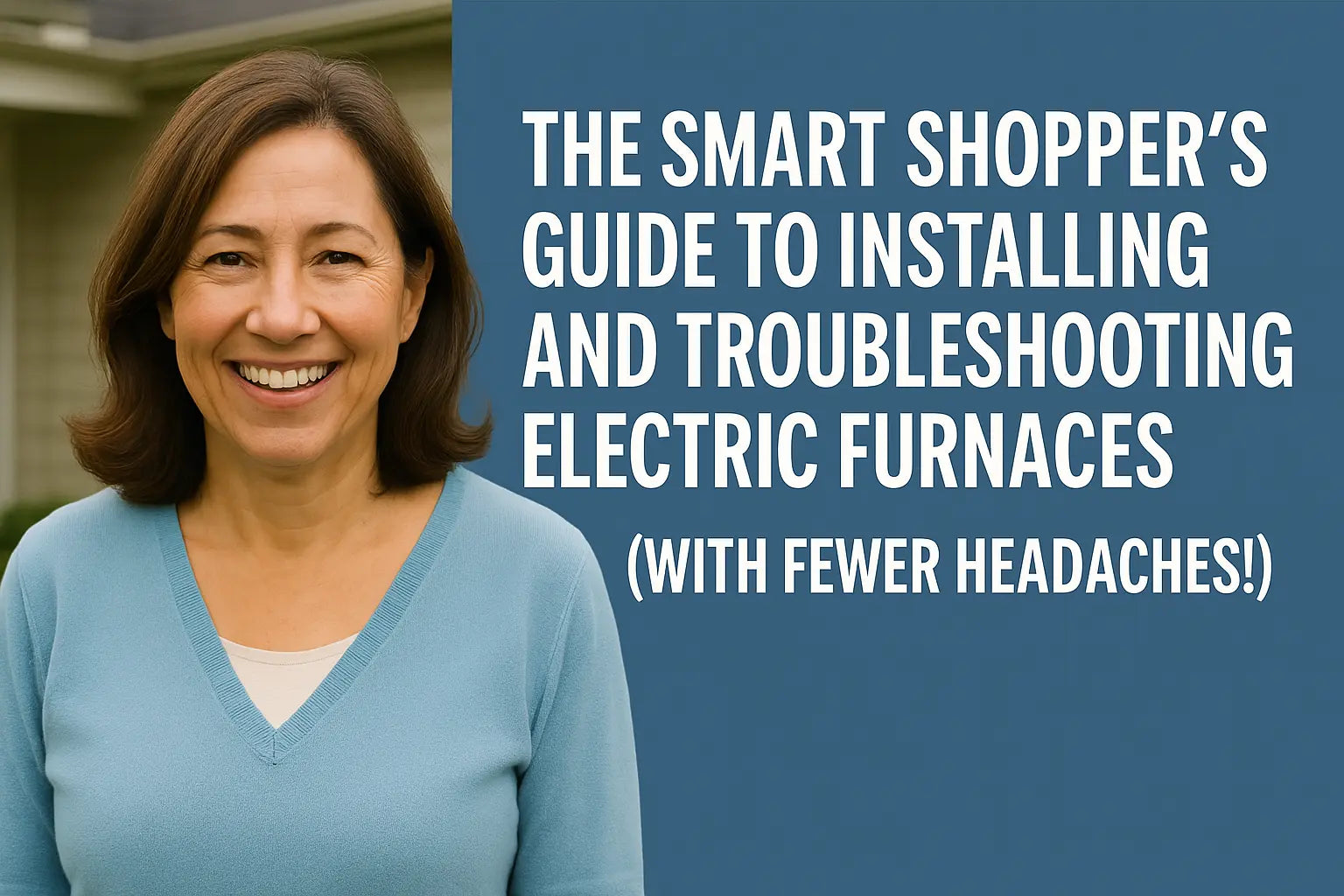Hey there, it’s Samantha Reyes! 💁
I’m the kind of gal who likes to know what I’m buying—especially when it comes to heating my home during those bitter winter months. I’ve spent hours researching electric furnaces, installation requirements, and how to troubleshoot the “surprise” beeps and cold-air mishaps that sometimes sneak up on you mid-February.
If you’re considering an electric furnace—or you already have one but want to be better prepared for maintenance and fixes—you’re in the right place. Let’s turn this into a warm, cozy, no-surprises kind of experience.
Why Electric Furnaces? 💡
Let’s start here: Why electric at all? Gas is great, but it’s not always available or feasible depending on where you live. Electric furnaces can be more affordable upfront, easier to install, and safer for homes without natural gas hookups.
Unlike traditional gas furnaces, electric models:
-
Don’t require venting (goodbye, chimney drama!)
-
Are easier to maintain (hello, fewer moving parts!)
-
Are ideal for smaller homes or zones
According to Energy.gov, electric resistance heating is 100% energy-efficient at the point of use, though electricity prices vary by region.
So yes—there’s a lot to love, but you’ll still want to be informed when it comes to install and repair. Let’s dig into that. 🛠️
Installing an Electric Furnace: What to Expect 🧰
Step 1: Sizing It Right
Choosing the right size furnace is everything. Undersize it and you’ll freeze. Oversize it and your energy bill goes to Mars. Use an online Manual J load calculator (like the one at Service Titan) to get your BTU needs dialed in.
Step 2: Electrical Panel Compatibility
Electric furnaces draw serious power. You’ll need:
-
A dedicated 240V circuit
-
60 to 100 amps of service capacity
-
A double-pole breaker sized for your unit
Want a visual? This Unico System installation guide is super helpful and includes diagrams that even I could follow.
Step 3: Ductwork Check
If you’re replacing a furnace, great—your ducts are likely in place. But be sure they’re:
-
Sealed tight (use mastic or foil tape)
-
Cleaned (nobody likes dusty heat)
-
Sized properly for airflow
Tip: Even new furnaces won’t perform well with leaky or undersized ducts. I learned that one the hard way. 😅
Step 4: DIY vs. Pro Install
You can DIY some parts, like prepping the pad or running low-voltage wiring. But unless you’re a licensed electrician, always hire one to make final electrical connections. I repeat: always.
This isn’t just about safety—it’s about code compliance too. Electrical work is regulated by the National Electrical Code (NEC). You can read up on those standards at NFPA.org.
Troubleshooting Common Issues ⚠️
We’ve all been there: it’s 2 a.m., the heat cuts off, and you’re under four blankets googling “furnace clicking but not starting.” Let me help you before the panic sets in.
Issue #1: No Heat Coming Out
Check:
-
Thermostat batteries
-
Circuit breaker (is it tripped?)
-
Furnace power switch
Many electric furnaces have a reset button inside the panel. Flip the breaker off, open the access door, and look for a small red or yellow button. Push it in. Close the panel. Flip the breaker back on. Voilà. 🔄
Issue #2: Furnace Blows Cold Air
This might mean the sequencer isn’t triggering the heating elements. That’s not a DIY fix, but knowing what to ask your tech saves time and labor.
Also, check the filter! A clogged air filter restricts airflow and can overheat the unit. Change it every 1–3 months. I like this guide from Bob Vila that explains why your furnace might suddenly go arctic.
Issue #3: High Energy Bills
Electric furnaces aren’t cheap to run if your home isn’t sealed up tight. Seal doors and windows. Use a smart thermostat. Upgrade insulation in attics and crawl spaces. Trust me—it all adds up. 🧾
And don’t forget to compare your usage against your electric rate. You can usually check your energy plan or historical usage with your provider, like through EnergySage.
Maintenance Tips for Long-Term Peace of Mind 🧽
I treat my furnace like I treat my minivan—it may not be glamorous, but it better work when I need it to. Regular care makes a big difference:
-
Change filters monthly during peak season
-
Vacuum dust from vents and registers
-
Schedule an annual inspection (even if it’s just a quick electrical check)
Pro Tip: Install a surge protector for your furnace. It’s a small investment that can prevent major component failures during power surges ⚡
When to Call a Pro 👩🔧
Here’s my rule of thumb: If wires are involved—or if I need a voltmeter—it’s time to phone a licensed HVAC technician or electrician.
Also call a pro if you notice:
-
Strange smells or burning odors
-
Loud humming or grinding noises
-
Breakers tripping repeatedly
For peace of mind, I recommend finding a certified HVAC contractor through ACCA's directory. That’s how I found the gem who saved my Thanksgiving dinner one chilly November. 🦃
Final Thoughts from Yours Truly 💬
I know a furnace isn’t the sexiest home purchase. But when you choose the right electric model and take care of it? It gives you years of safe, steady warmth.
Whether you’re a DIY warrior or a “call the pro” type like me, knowledge is power. Bookmark this guide, share it with your handy neighbor, and don’t forget to check out the models over at The Furnace Outlet’s electric furnace collection—they’ve got solid picks at great prices. 💸🔥
Need more installation tips? Visit my guide: Electric Furnace Installation for Beginners.
Stay warm out there—and if your furnace ever gives you grief, just remember: You’ve got this. And if you don’t? I’ll help you figure it out. 😉
Hugs and heat,
Samantha, Home Comfort Advisor







